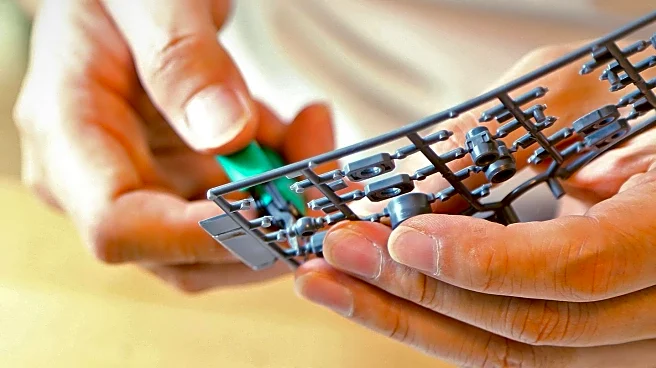What is the story about?
What's Happening?
An international clinical trial has demonstrated the effectiveness of an implantable neurostimulation system in stabilizing blood pressure for individuals with spinal cord injuries (SCI). The trial, led by researchers from the University of Calgary, École Polytechnique Fédérale de Lausanne, University of Lausanne, and Sint Maartenskliniek, involved 14 participants across Canada, Switzerland, and the Netherlands. The system uses electrode arrays connected to a pulse generator to deliver electrical stimulation, tailored to each patient's needs, thereby restoring blood pressure stability. This development is particularly significant for patients like Cody Krebs, who suffered a severe SCI in a motor vehicle accident, leaving him vulnerable to dangerous blood pressure fluctuations. The therapy has shown consistent results across multiple clinical settings, providing immediate improvements in blood pressure regulation.
Why It's Important?
The implantable neurostimulation system offers a promising solution to a critical issue faced by SCI patients—chronic hypotension and autonomic dysreflexia, which can lead to life-threatening blood pressure spikes. By stabilizing blood pressure, the system not only improves the quality of life for patients but also reduces the risk of cardiovascular complications. This advancement could shift the focus of SCI care from solely restoring movement to addressing other debilitating symptoms. The successful deployment of this technology across different countries and medical protocols highlights its potential for widespread adoption, offering hope to many SCI patients globally.
What's Next?
ONWARD Medical, the developer of the neurostimulation system, has received FDA approval to initiate a pivotal trial in the United States, Canada, and Europe. This trial will involve approximately 20 leading neurorehabilitation and neurosurgical research centers, aiming to further validate the therapy's effectiveness and safety. As the technology becomes more accessible, it could lead to significant changes in the standard care for SCI patients, potentially influencing healthcare policies and practices related to spinal cord injuries.
Beyond the Headlines
The development of this neurostimulation system underscores the importance of interdisciplinary collaboration in medical research, combining insights from neuroscience, engineering, and clinical practice. It also raises ethical considerations regarding the accessibility and affordability of advanced medical technologies, as well as the need for ongoing support and training for patients using such systems. Long-term studies will be crucial to understanding the full impact of this therapy on patients' health and well-being.
AI Generated Content
Do you find this article useful?















